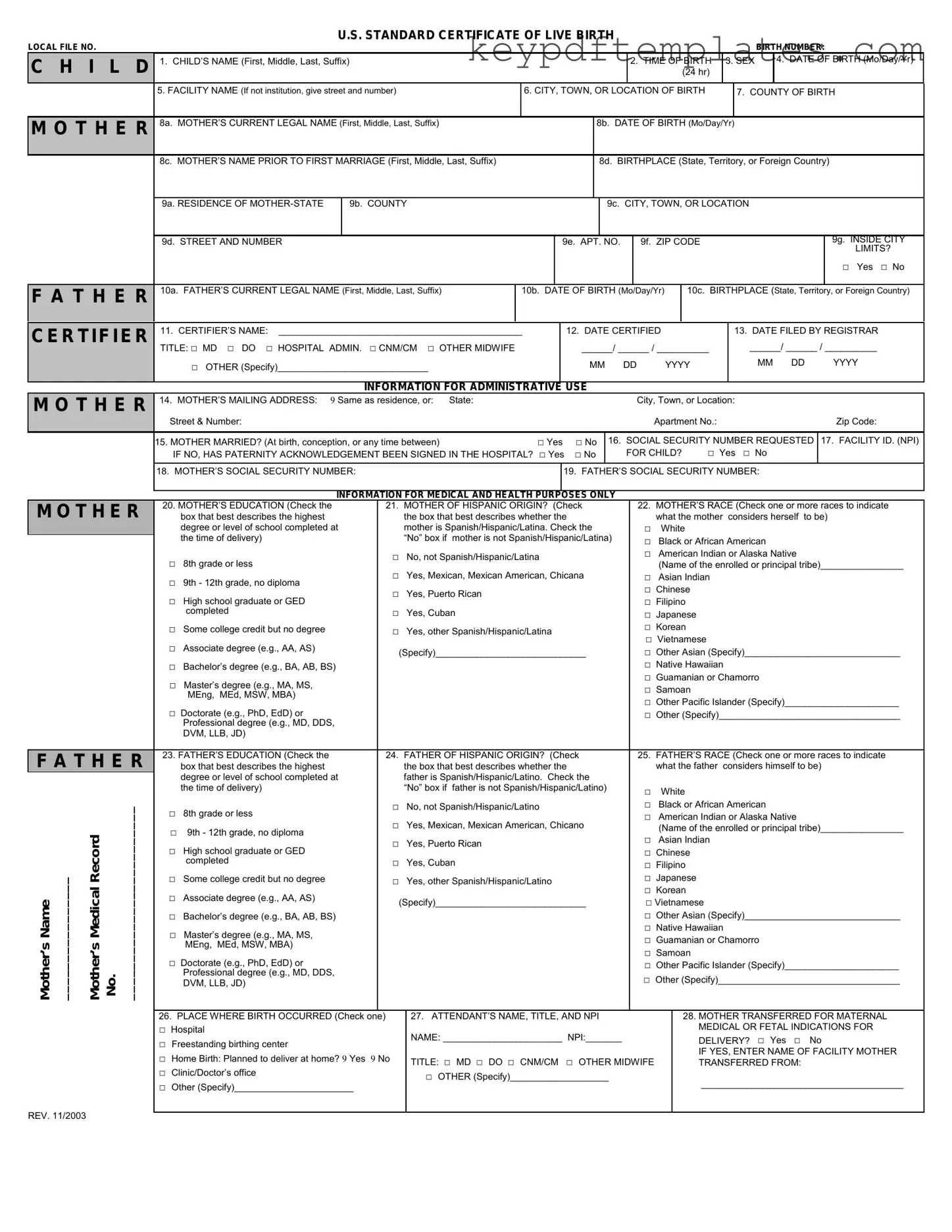Get CDC U.S. Standard Certificate of Live Birth Form
The CDC U.S. Standard Certificate of Live Birth form is an official document used to record the details of a newborn's birth. This form serves as a vital record for individuals and families, providing essential information for legal and health purposes. Understanding its components and significance is crucial for parents and healthcare providers alike.
Modify Document Online
